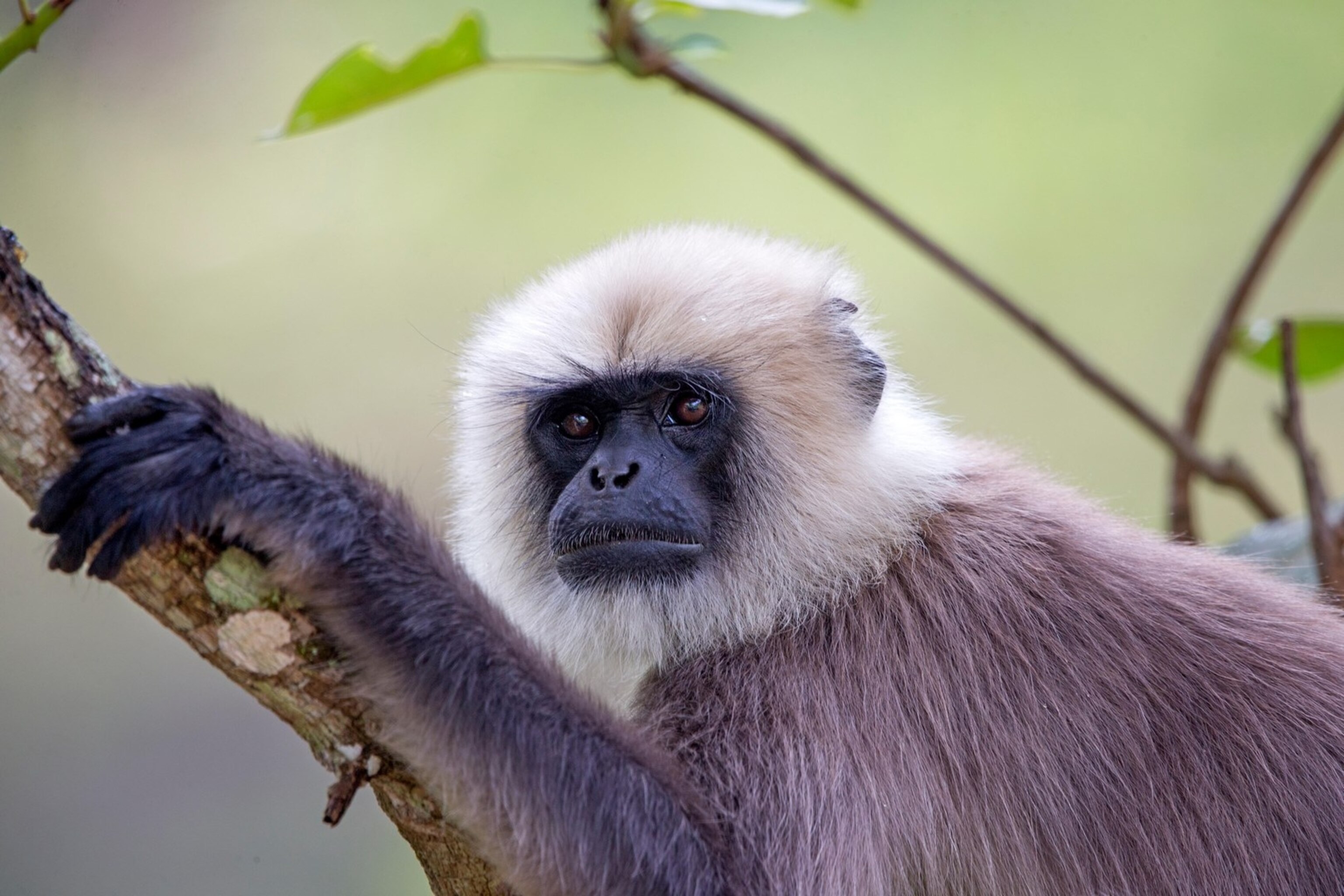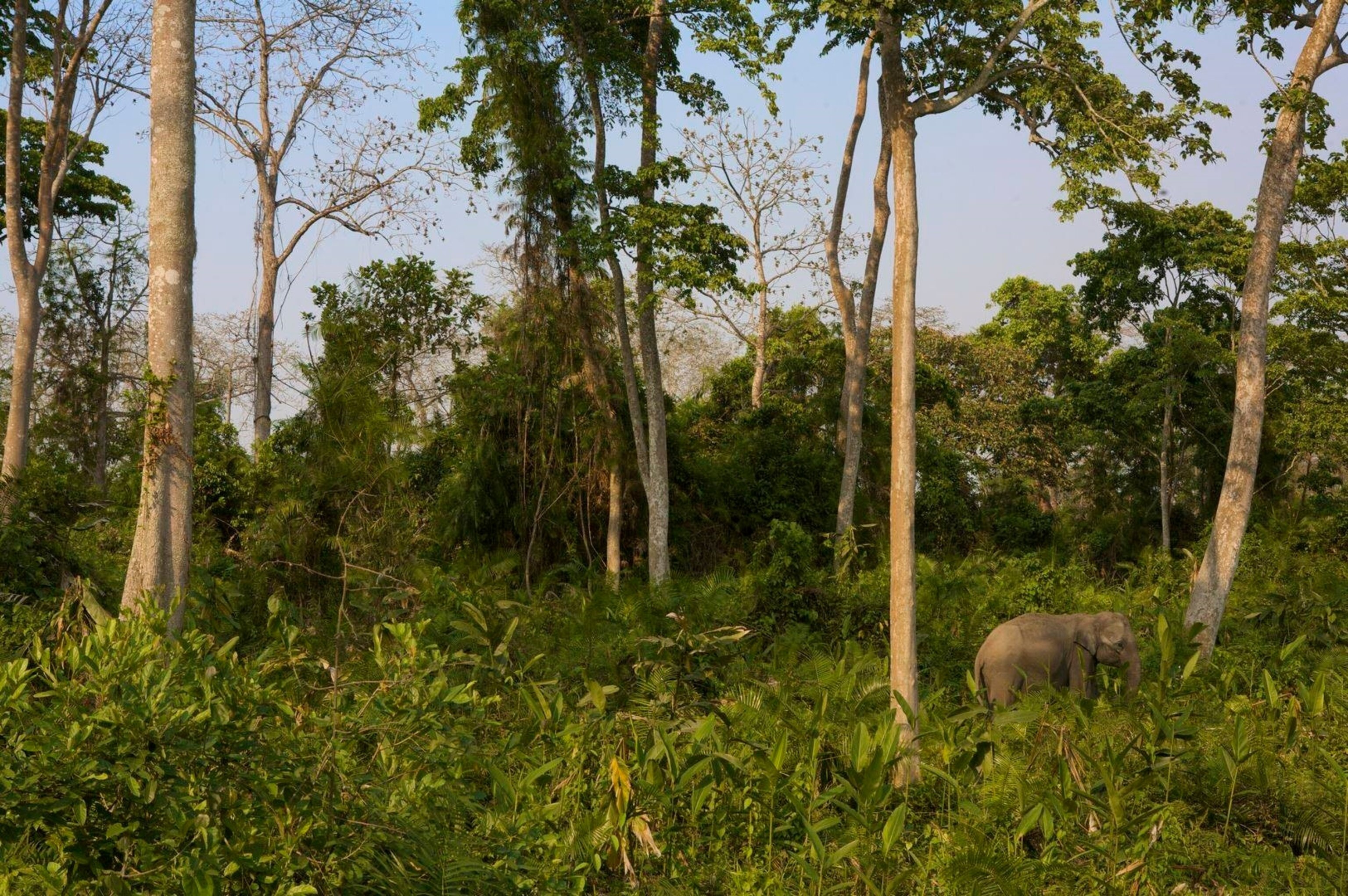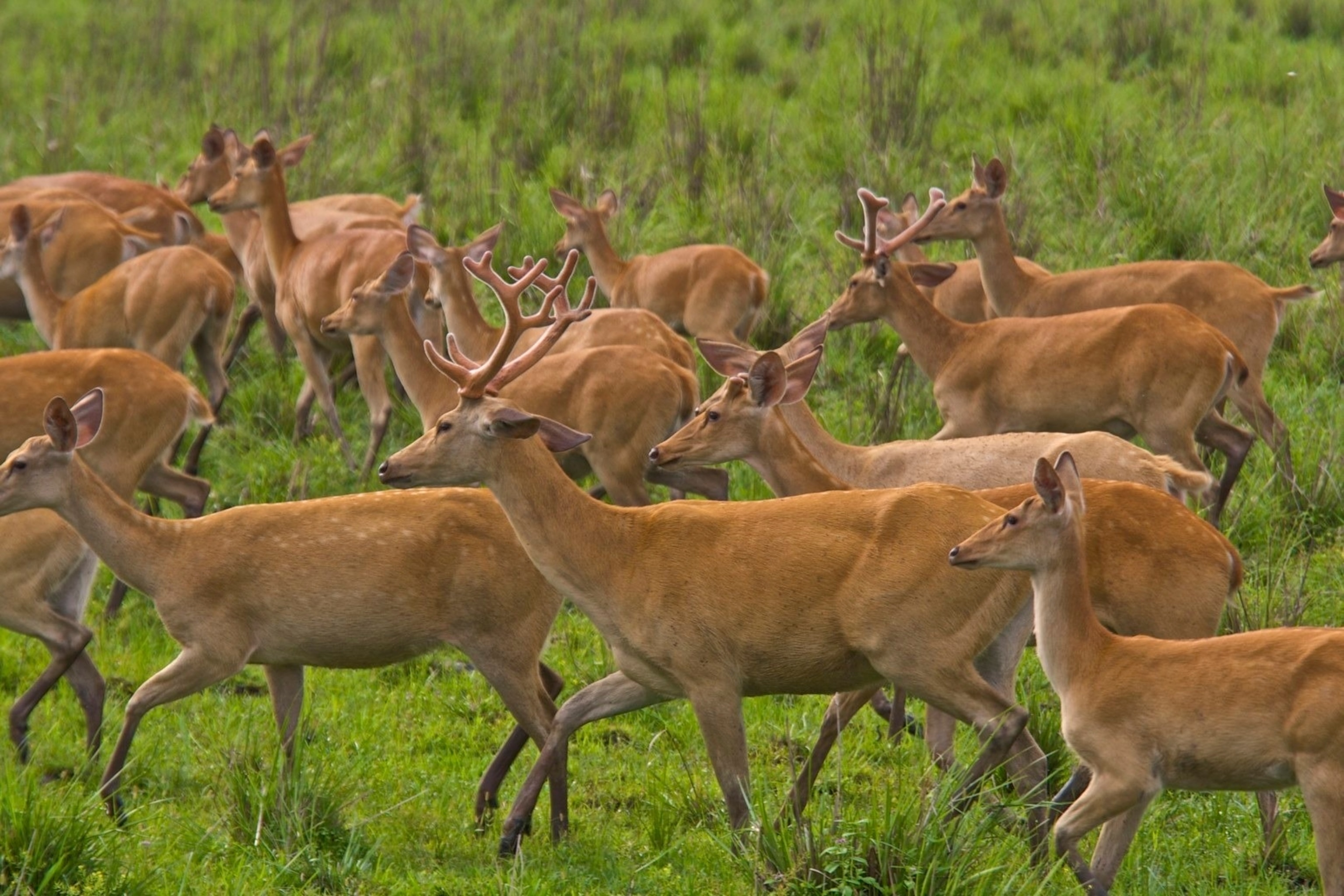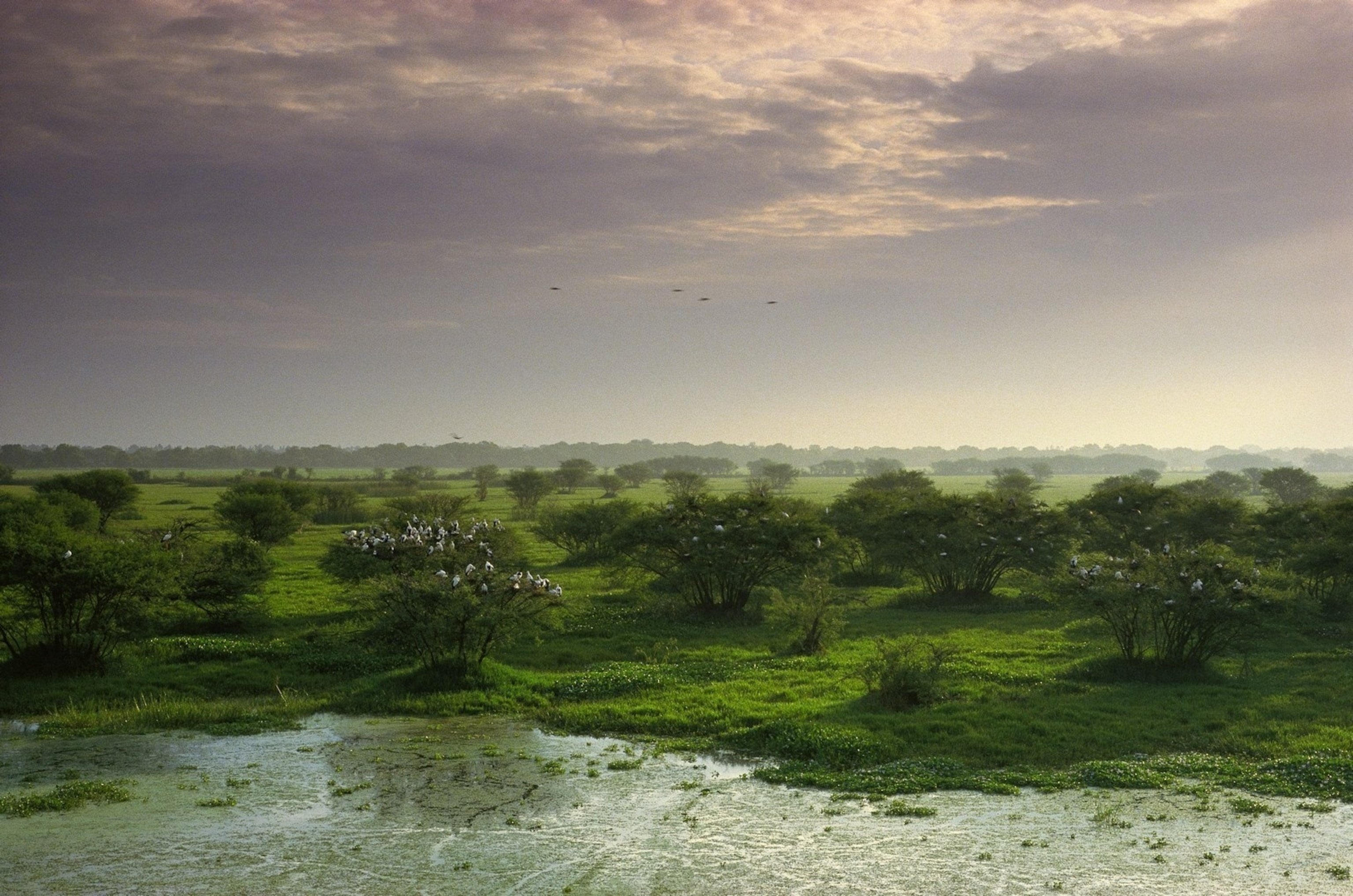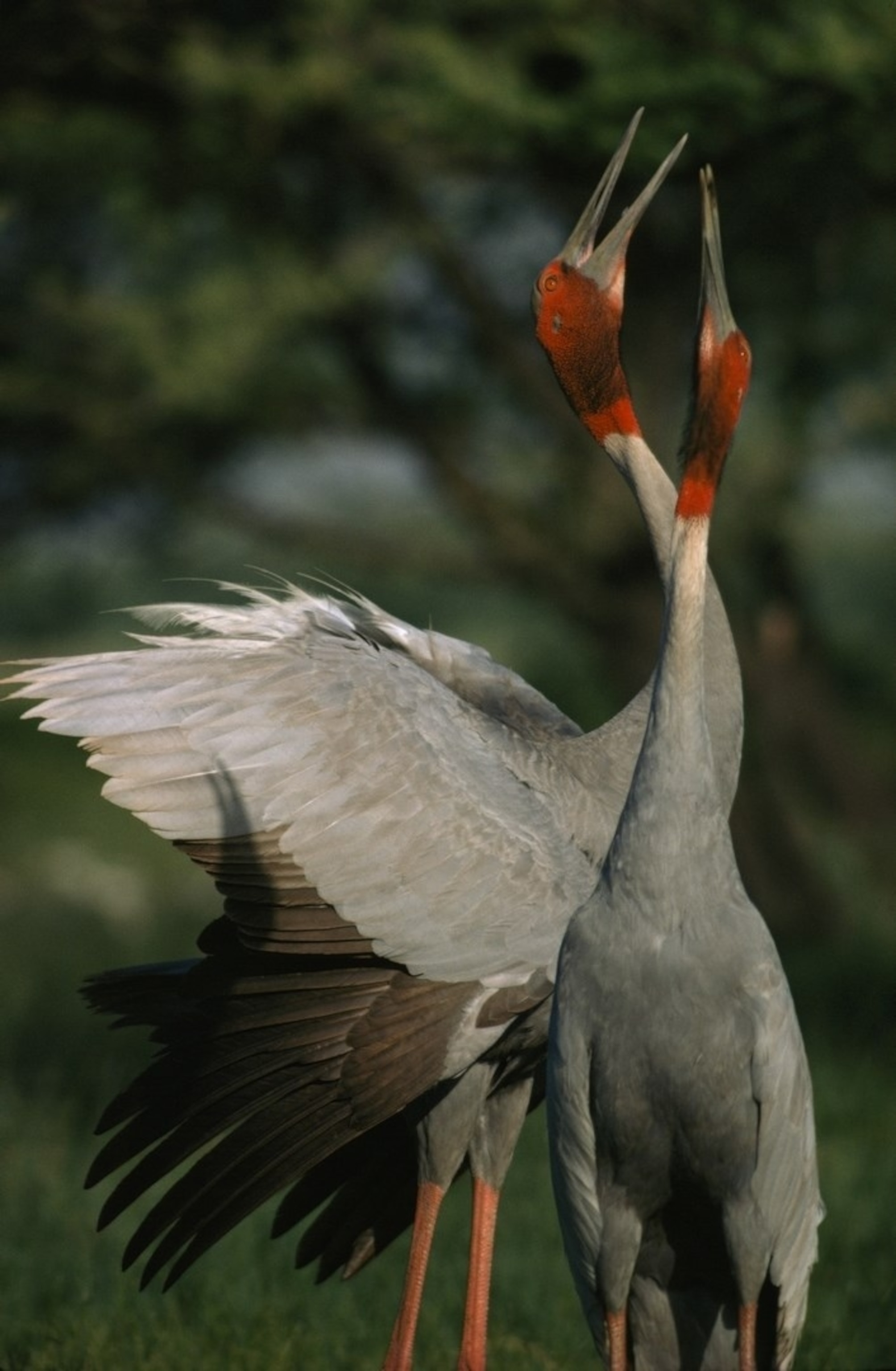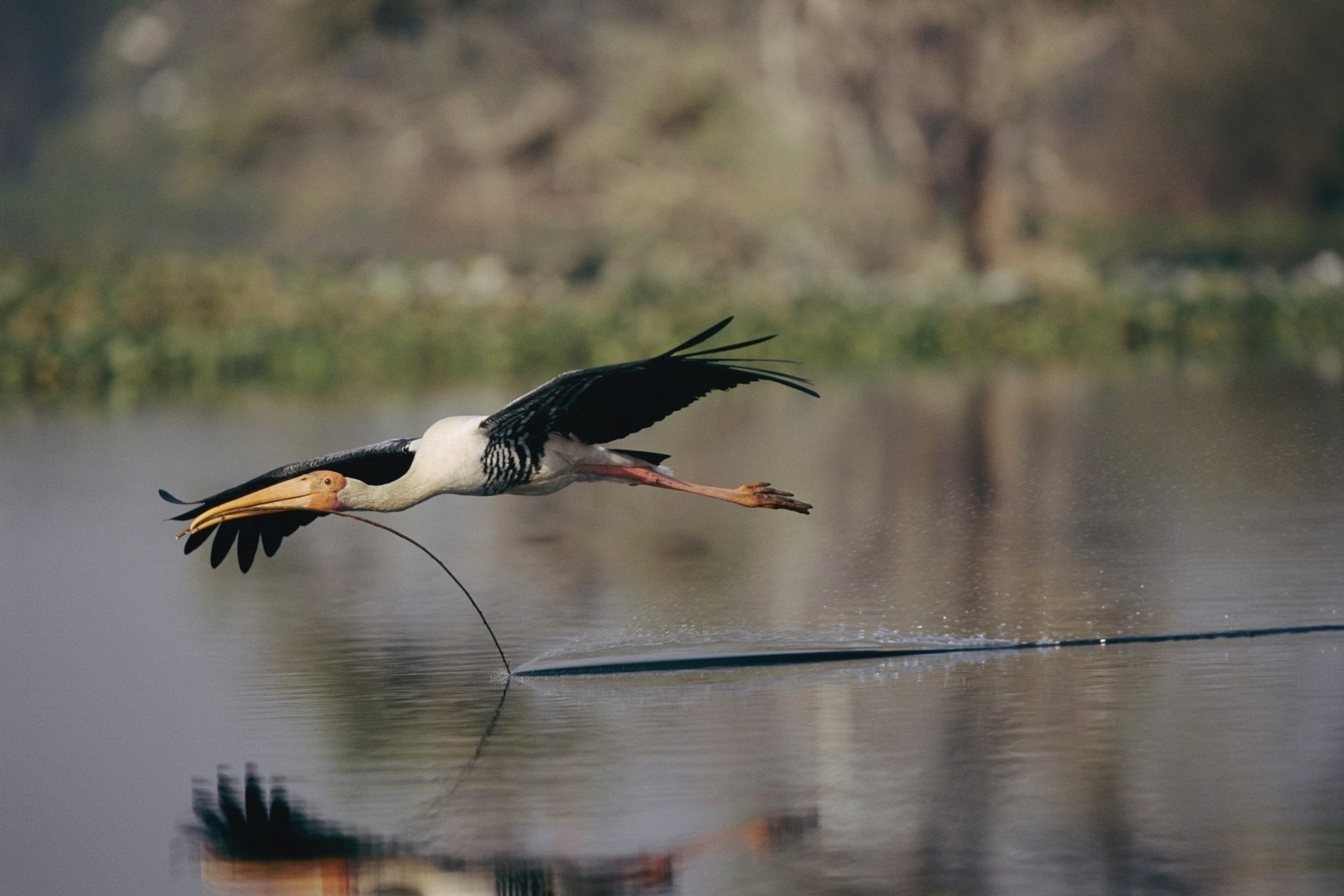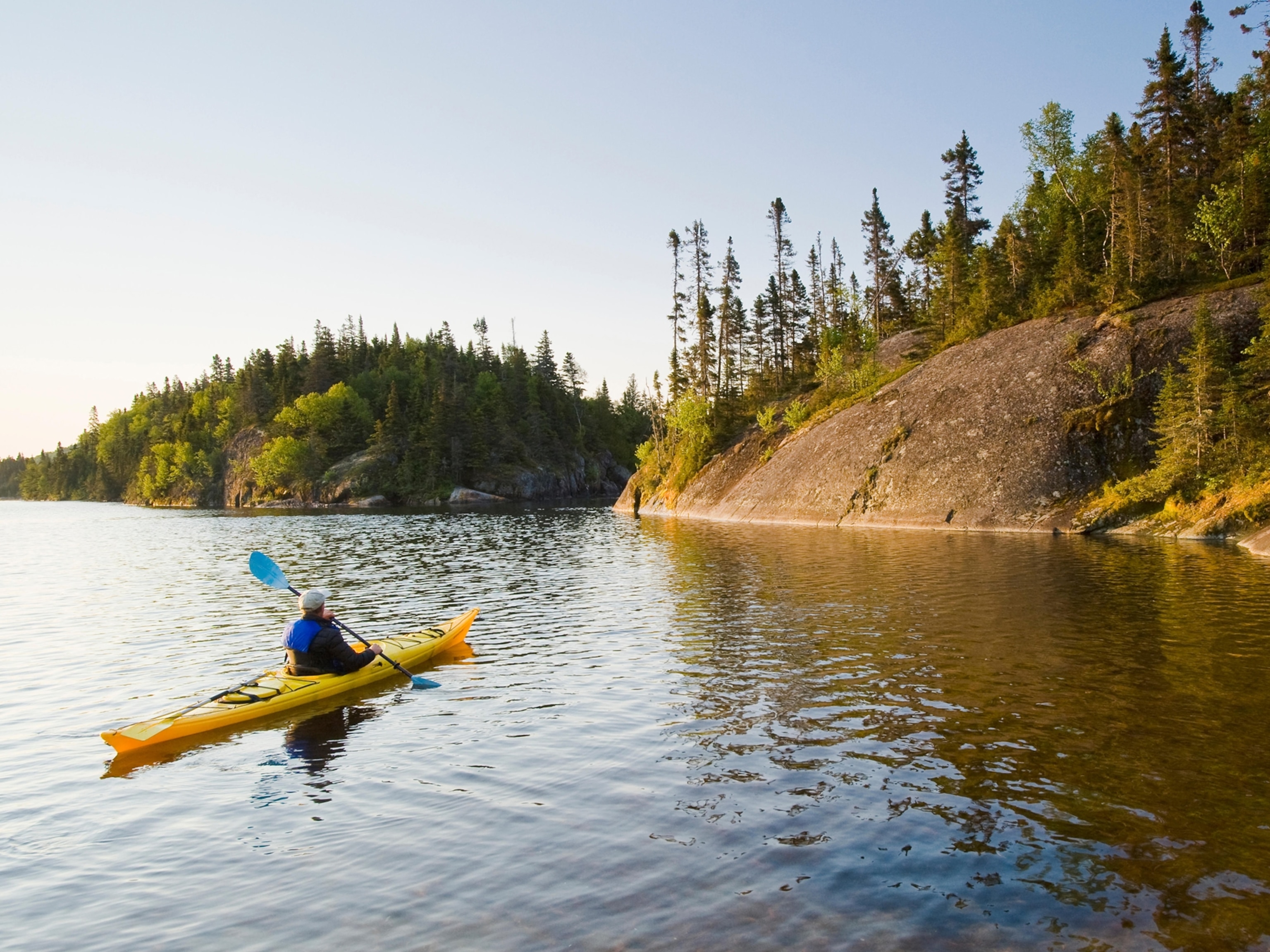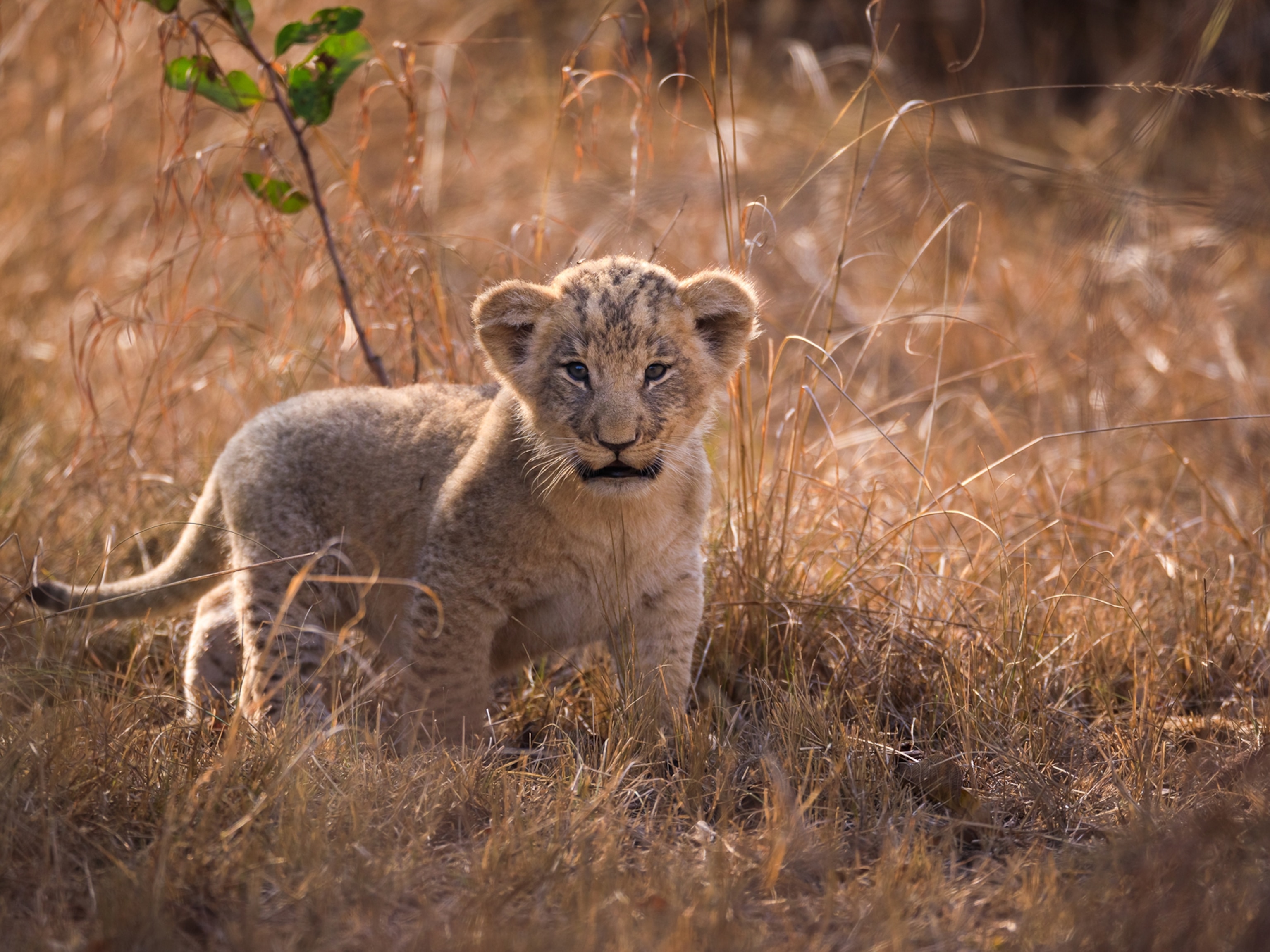6 sensational places to see wildlife in India
Explore India's National Parks to spot diverse animal life, including tigers, leopards, rhinos, birds and river dolphins.

Beyond India’s buzzing cities nature lovers can discover serene sanctuaries teeming with wildlife. While the iconic Bengal tiger—India’s national animal—is the top draw for safari-goers, an impressive array of wild things can be spotted in India’s teakwood forests, grasslands, mountains, rivers, and other natural spaces.
India has more than a hundred national parks, covering over 15,600 square miles of protected land. Many of the country’s wildlife sanctuaries once were hunting reserves of the maharajas, and more than 50 have been designated as tiger reserves. According to the last available census, done in 2014 by the Wildlife Institute of India (WII), India is home to 2,226 tigers, 70 percent of which reside within tiger reserves.
If you’re ready to fulfill a bucket-list dream of seeing a wild Bengal tiger or are eager to spot Asian elephants, Asiatic wild dogs, and other species rarely seen outside of zoological parks, here are six superlative spots in India for wildlife watching.

Nagarahole National Park, Karnataka
The lush forests and marshlands of southern India’s Nagarahole National Park, also known as Rajiv Gandhi National Park, form one of the country’s premier tiger destinations. Backed by the hills of the Western Ghats, the park is filled with fragrant sandalwood and teak trees, thick groves of bamboo, and dozens of winding streams. A jeep safari is the best option to spot big cats, while a slow drift in a coracle—a small round boat—along the Kabini River offers prime viewing opportunities for aquatic birds, crocodiles, and Indian elephants.
FUN FACT: Nagarahole is one of the best national parks in the world for spotting leopards.
KNOW BEFORE YOU GO: The park is open year-round but can close due to flooding in July and August during monsoon season. It’s best explored as part of a tour of the region, combining Nagarahole with trips to Karnataka’s beaches, hill stations, and the lovely city of Mysore (Mysuru).
WHEN TO VISIT: October to February
GATEWAY CITY: Mysore
Kaziranga National Park, Assam
On the floodplains of the Brahmaputra River, Kaziranga National Park began as a forest preserve in 1905 with the aim of bringing the greater one-horned rhinoceros back from the brink of extinction. Hunted for their prized horns, rhinos are a prime target for poaching. With Kaziranga’s protection, nearly two-thirds of the world’s population of greater one-horned rhinos now live inside the park. The reserve’s many tigers are well hidden amid elephant grass and dense jungle. But you’ll spot buffalo, endangered swamp deer, and river dolphins.

FUN FACT: Named a UNESCO World Heritage site in 1985, Kaziranga is one of the last areas in eastern India largely untouched by humans.
KNOW BEFORE YOU GO: Most visitors fly from Kolkata to Jorhat, 70 miles from the park, or Guwahati, 135 miles away. The park is closed from June to September for monsoon season.
WHEN TO VISIT: November to March
GATEWAY CITY: Jorhat
Keoladeo National Park, Rajasthan
Situated between the historic cities of Jaipur and Agra, Keoladeo National Park is an ornithologist’s dream, with hundreds of bird species in its compact size. Once a duck-hunting ground for maharajas in the 19th century, this reserve became a bird sanctuary in 1976 and a national park in 1982. Now a UNESCO World Heritage site, it plays a vital role in protecting migratory birds, an aim of National Geographic’s 2018 Year of the Bird campaign. Many species along the Central Asian flyway, some critically endangered, winter here. Part wetland and part savanna, the park is crowded with painted storks, and birders delight in spotting sarus cranes, spoonbills, and black-headed ibises.
FUN FACT: Keoladeo hosts migratory waterfowl from China, Afghanistan, Turkmenistan, and Siberia.
KNOW BEFORE YOU GO: Most visitors arrive via the two-hour drive from Agra, while the nearest airports are in Delhi and Jaipur.
WHEN TO VISIT: October to February
Satpura National Park, Madhya Pradesh
Picturesque Satpura National Park, in the highlands of central India, is a photographer’s paradise. Grasslands and malachite green forests are riddled by ravines and slot canyons, concealing temples and waterfalls. “I love Madhya Pradesh,” says National Geographic photographer Matthieu Paley. “It’s a pocket of real India, far from the obsessive selfie culture. Just make sure you bring enough spare camera batteries.” The park is home to leopards, birds, and sloth bears, but the highlight is its diverse range of antelope and deer species.
FUN FACT: Tranquil herds of diminutive Indian muntjacs, long-limbed spotted chital, and splendidly antlered sambars and blackbucks move through Satpura’s woodland glades.
KNOW BEFORE YOU GO: Satpura offers safaris by jeep, motorboat, kayak, and foot. Bhopal is the nearest airport, while Pipariya is the closest railhead. The park is easily accessed by road from the cities of Jabalpur, Chhindwara, and Nagpur.
WHEN TO VISIT: November to February
GATEWAY CITY: Bhopal
Hemis National Park, Jammu And Kashmir
High in the Himalaya, Hemis National Park envelops snow-covered peaks and alpine tundra at the northern tip of India. Most visitors come in summer when Buddhist prayer flags flutter under the sun, but the park is a year-round picture of sparse beauty. “Visit Hemis in winter,” advises Paley. “That’s when landscapes are starkest.” It’s also the best time to spot this remote park’s headline attraction: snow leopards. A new count is forthcoming, but the WII, citing a 2013 estimate, reported that 3,920 to 6,390 snow leopards may remain in the wild. Hemis likely hosts the densest population, but sightings are rare.

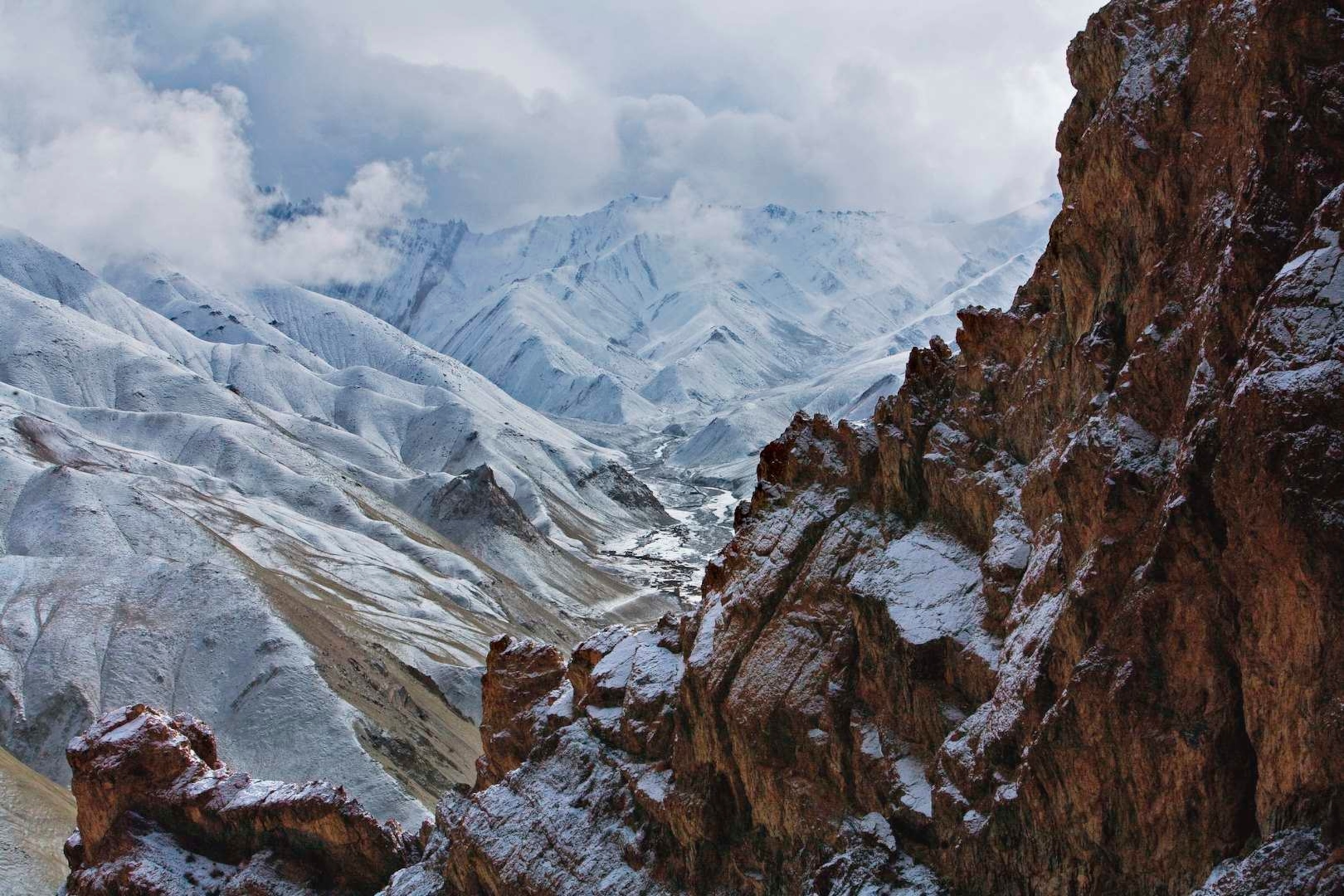
FUN FACT: The park’s elusive snow leopards are known as “gray ghosts.”
KNOW BEFORE YOU GO: About an hour flight from Delhi, the Ladakh region’s main city, Leh, is 11,500 feet above sea level, so allow time to acclimatize to the altitude.
WHEN TO VISIT: January to March
GATEWAY CITY: Leh
Mahatma Gandhi Marine National Park, Andaman Islands
Mahatma Gandhi Marine National Park consists of 15 forest-cloaked islands surrounded by coral reefs and home to indigenous tribes. Tourism is just beginning to take off here, and only two islands—Jolly Buoy and Red Skin—are open to the public, offering visitors a profound sense of remoteness. “Finding a king cobra on her nest, visiting the home of the endemic Narcondam hornbill, watching manta rays feed in the current. These have been my most precious experiences in 40 years of visiting the Andamans,” says Rom Whitaker, a National Geographic filmmaker and co-founder of the Andaman Nicobar Environment Team.

FUN FACT: More than 560 coral species have been identified in the coral reefs of Jolly Buoy and Red Skin islands.
KNOW BEFORE YOU GO: Arrival is via Veer Savarkar airport in Port Blair, 600 miles from India’s east coast. Most activities close from June to August for the monsoon.
WHEN TO VISIT: October to February
GATEWAY CITY: Port Blair

